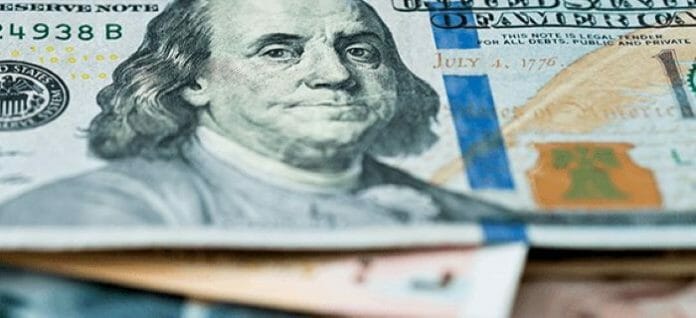What no one seems to be focussing on, while the US dollar goes through turbulent times, is that over in Europe things are not so shiny either.
There have been significant flows back from the US to Europe, reversing the massive capital shifts that occurred following the start of the war in Ukraine.
As the US economy faces complexities and headwinds of historic proportions, the risk of a more direct continuing impact on the EU from the Ukraine war and sanctions should not be underestimated.
Energy prices have retreated, but Russia has not. There has been a great effort to compartmentalise the war within the global investment community. But on the main streets in European cities and villages, consumers and business managers remain concerned.
This concern seems to be growing again.
Yesterday’s German Business Confidence confirmed the rollover from the slight recovery seen a few months ago. The ZEW Economic Indicator for Germany fell to just 4.1 in April.
Investor confidence is again dropping quickly. Suggesting the coming months are likely to see sustained lacklustre economic outcomes.
Euro and other currencies gain against the USD
Recently, the Euro has enjoined a tremendous rally along with some other currencies as the US dollar weakened. The long-term outlook for the US dollar is not strong. A sluggish economy, with high inflation, falling asset prices, and a potential commercial property crisis following close on the heels of the banking crisis.
Hence, the justifiable shift of many a major portfolio back toward Europe due to its position as the most capable alternative reserve currency at this time.
Investors and wealth managers may begin to have second thoughts, however, as the initial start of the year economic rebound across Europe begins to flatten out.
While geo-political tensions maintain their potential to flare at any moment. Large demonstrations and public unrest regarding issues from the pension age to the war and sanctions have also been prevalent. Europe is not a settled place at the moment by any means.
China’s growth rate ticks up
Meanwhile, in Asia, we have just seen China’s GDP tick up nicely to 4.5%. This is exactly the kind of steadfast, but not rocketing growth we have been expecting. For the past two years, we have been both warning and reassuring people that post-Covid China would return to its very own unique reset. That from the post-agrarian speed growth, to levels more akin, but still superior to, the West. Our forecast has been for a long-term, decade at least shift to strong growth only in the 2% to 5% range.
Many have been surprised that China’s reopening has not led to a faster growth trajectory, but by coincidence, the Covid slow-down had been masking the grander reset that was already underway before Covid hit.
Now that a period of lower, but still impressive sustainable growth is increasingly being recognised by the market, it may be time for portfolio managers to consider greater currency diversification than they had in the past. This could include the Renminbi.
While not popular in the US at the moment, China remains favoured by much of the Middle East, South America, Africa, and even to some degree in Europe.
For over a decade now, I have advocated that China/Asia represents the ‘New First World’, while Europe/USA slipped into my ‘Old First World’ category. This shift in economic power toward three equal major regions of Asia/Europe/USA is undeniable and ongoing.
The EU, the Euro, is most certainly taking its place in this regard. China, however, is still a long way back as we enter the long-term reserve currency final straight.
There are considerable hurdles for the Renminbi, including persistent geo-political tensions and perception difficulties among major institutions.
Nevertheless, as the disarray and indebtedness of the US economy continue and Europe still has a war right on its borders, the idea of greater currency portfolio diversification will only continue to accelerate.
Market insights and analysis from Clifford Bennett, Chief Economist at ACY Securities









